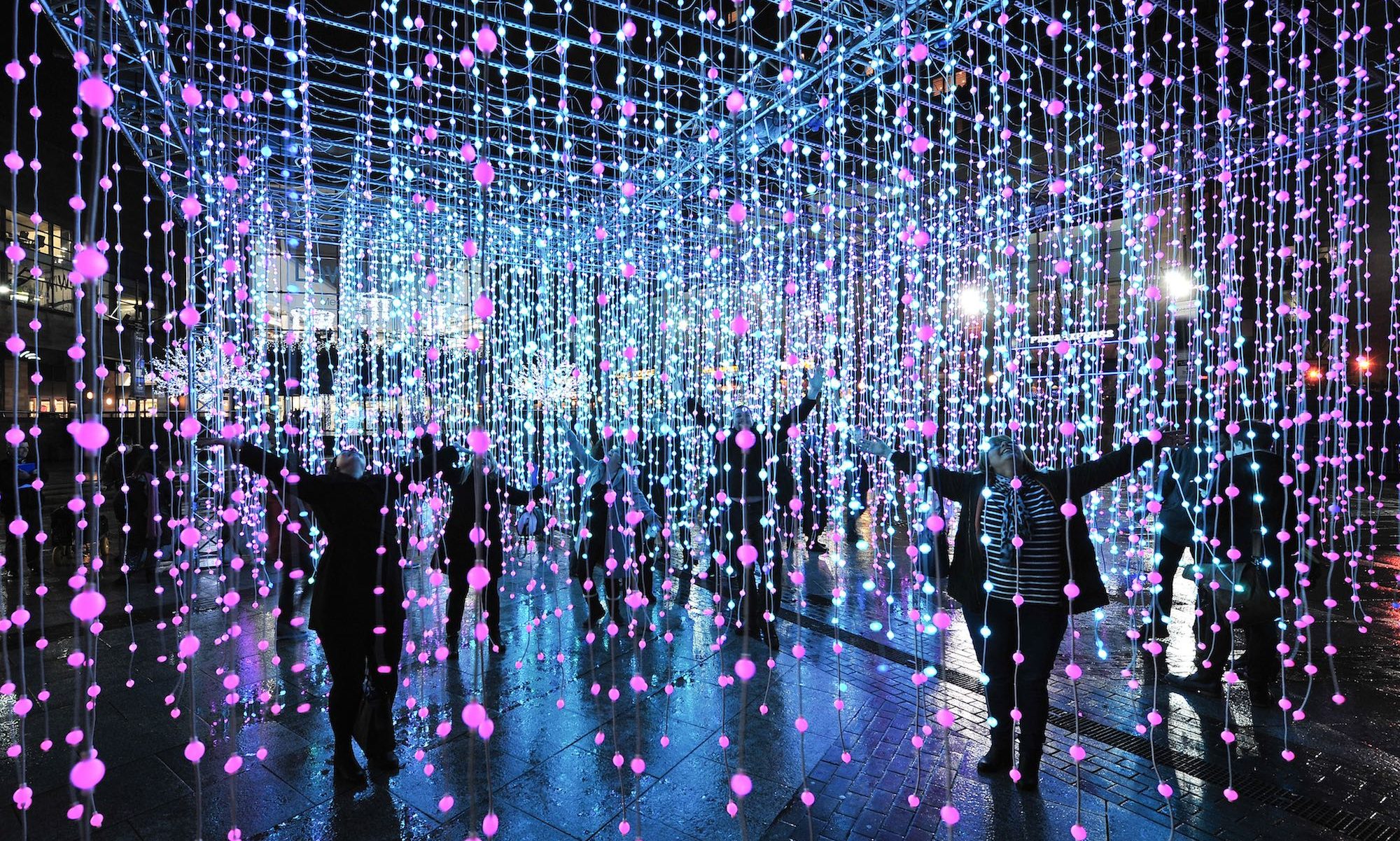My project is using the ABB arm to light paint a shape in 3D. For my maquette I made a few proof of concept photos/videos. The first element of the project I tested was the light painting. To test this I checkout a DSLR camera and tripod from the ATC and experimented with the settings for a long exposure photo to make a light painting. In the photo below I had a friend move their phone in a circle in a dark room.
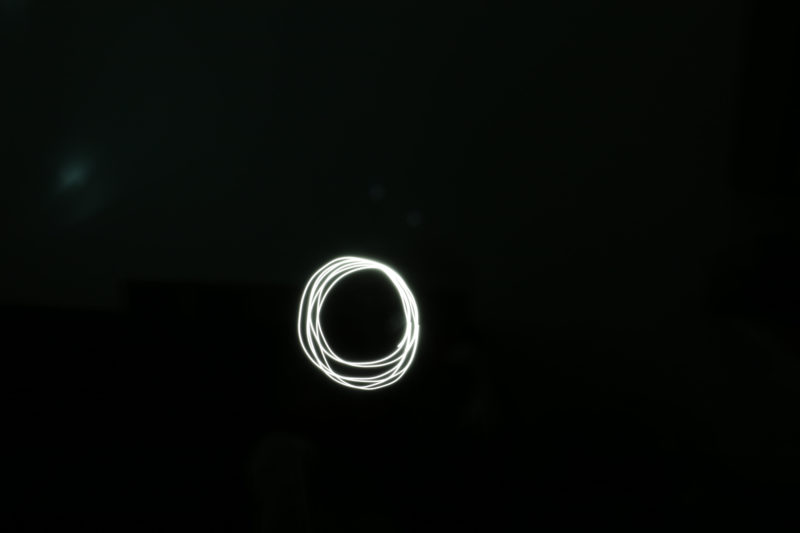 I had an opportunity to test this element again when a was waiting to laser cut another part of the project. The laser itself was not visible until it burned through the material being cut. This long exposure photo did not turn out as well as the previous one due to the ambient light in the shop.
I had an opportunity to test this element again when a was waiting to laser cut another part of the project. The laser itself was not visible until it burned through the material being cut. This long exposure photo did not turn out as well as the previous one due to the ambient light in the shop.
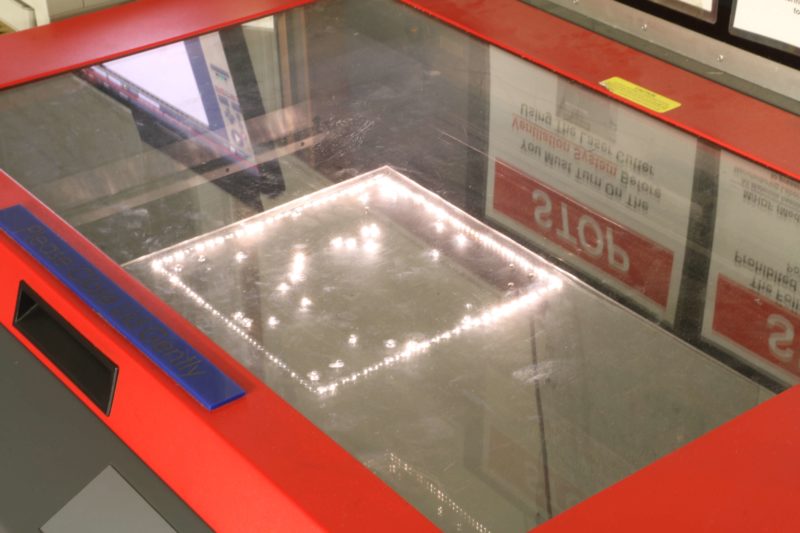
After that I tested the time-lapse element of my project. Since light painting is constrained to 2D it is necessary to take multiple pictures of the same scene to show the 3D motion of the robot arm. To prototype this element of my project I laser cut a jig for a camera tripod to rotate in an arc around the arm. In the photo below the setup is shown with the jig on the floor around the ABB platform in Washburn.
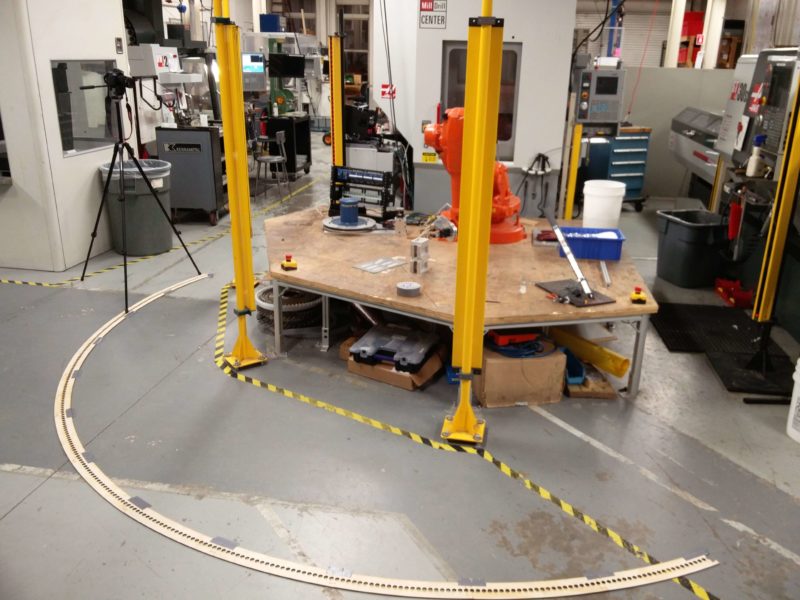
Each of the holes in the jig is a position for a photo to be taken, where the tripod’s legs are aligned.
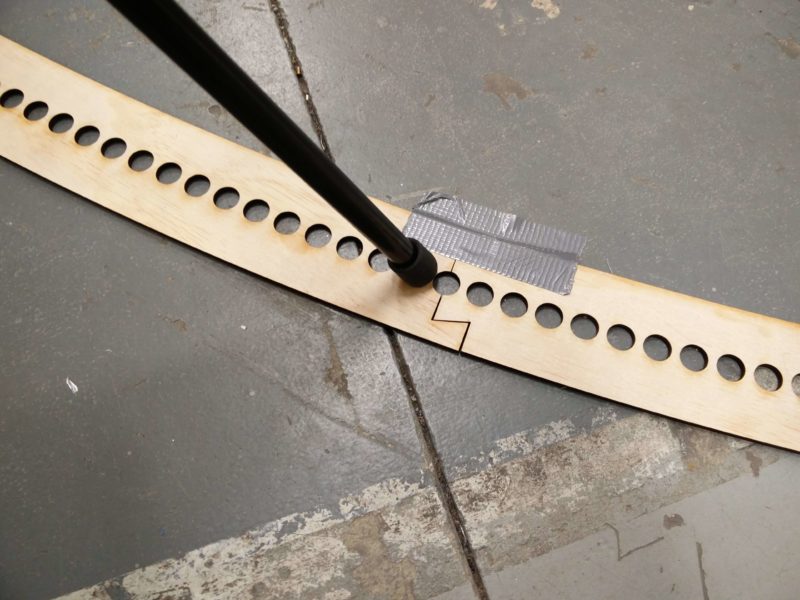
After taking 231 photos with the jig I learned how to use adobe premier and converted all of the photos into a video shown below.
Despite making a jig the video was very unstable from slight misalignment. However this was able to be fixed with a stabilizer in post processing, the result is shown below.
The last element I worked on was the lighting system. For this I hooked up a few sk6812 LEDs to an esp32, made a driver for them, and made a protoboard to attach to the ABB arm.
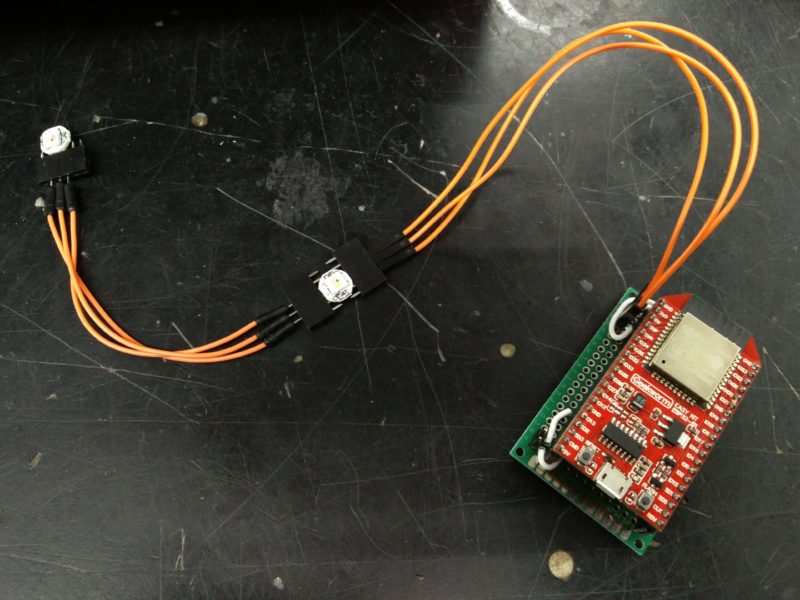
Bill of Materials:
- small ping pong balls to defuse the LEDs ($4) (do not have)
- plywood for laser cutter ($9)
- esp32 ($5)
- wire ($1)
- LEDs($5)
- DSLR camera from ATC (free to use)
- tripod from ATC (free to use)
- ABB arm in Washburn (free to use)
Schedule:
(4/5) – test light painting, rotation timelapse prototype, control LEDs
(4/12) – finish light fixture, control ABB arm, test light painting with arm
(4/19) – complete first light painting video
(4/26) – iterate light painting video
